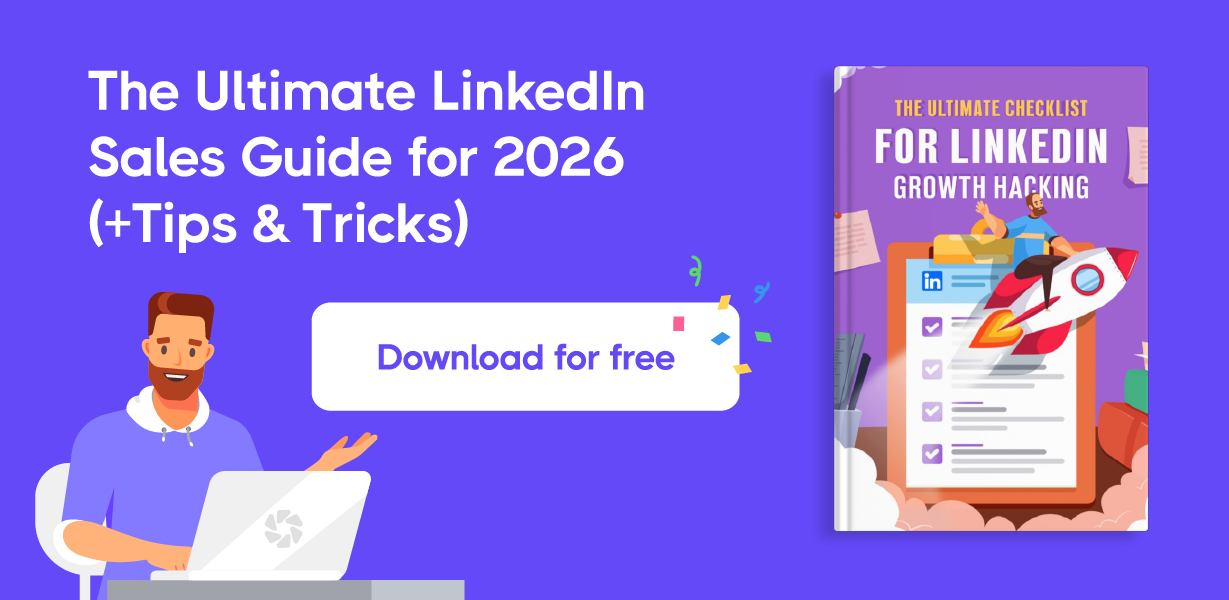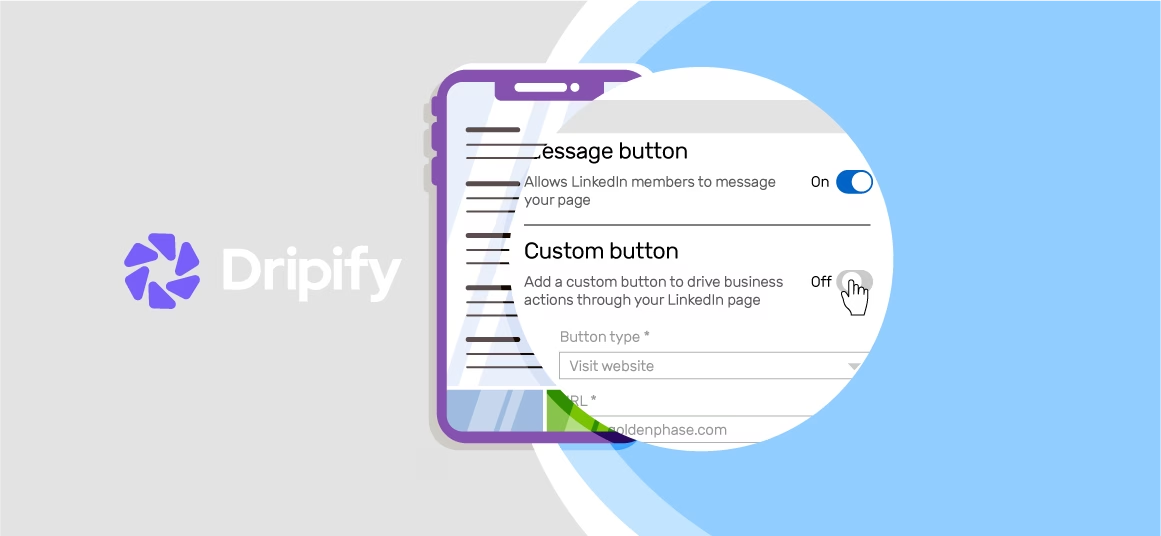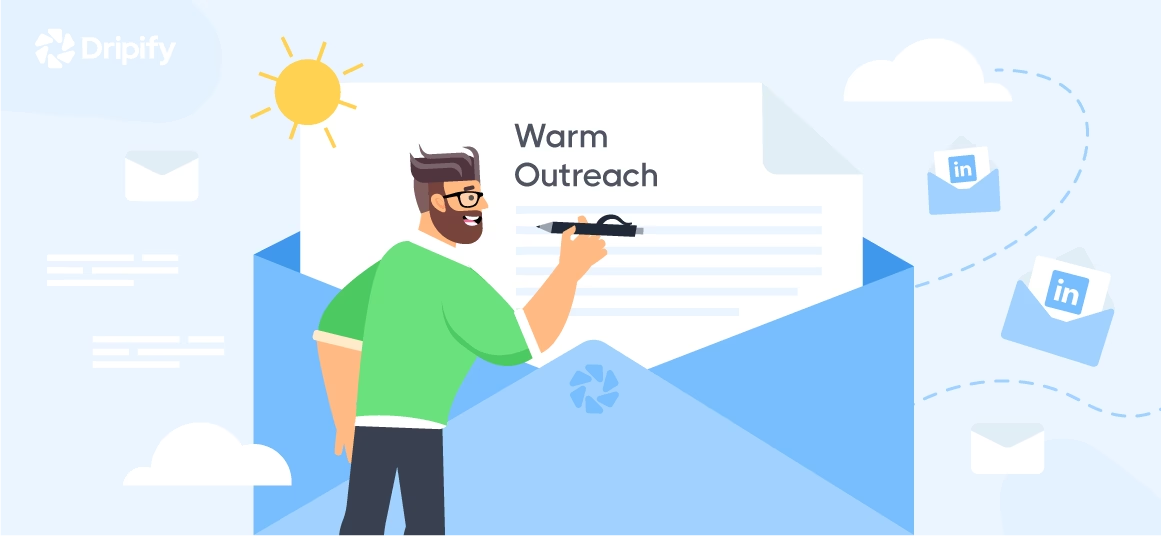| Getting your Trinity Audio player ready… |
Cold outreach often feels intrusive and has low response rates. If you’re reading this, chances are you’ve already tried cold outreach and found it less than ideal. Warm outreach, on the other hand, is great for starting conversations with people who already have some connection to your business.
Many sales professionals waste time chasing leads that never had a real chance of converting. Warm outreach can be the difference between a cold lead and a deal closed.
- What Is Warm Outreach?
- Warm Outreach Strategy
- 1. Identify Your Warm Prospects
- 2. Research Pain Points and Needs
- 3. Personalize Your Outreach Message
- 3. Choose the Right Channel
- 4. Keep Timing in Mind
- 5. Deliver Value Right Away
- 6. Follow-Up
- Benefits of Warm Outreach
- Warm Outreach Email Template
- Cold Outreach vs Warm Outreach
- How to Use Dripify for Warm Outreach on LinkedIn
The warm outreach strategy is rooted in the idea that B2B sales professionals need to work smarter, not harder. For example, instead of making hundreds of cold calls or sending mass emails, you should reach out to people who already know your brand.
What Is Warm Outreach?
Warm outreach is an approach where you reach out to prospects who recognize you or have interacted with your company, brand, or content in some way. This could be a past lead who didn’t convert, a LinkedIn user who engaged with your content, or a referral from an existing client.
Unlike cold outreach, where you start from scratch, warm outreach has an element of familiarity. This makes it more likely that your prospect may respond to your outreach.
The difference between cold vs warm outreach is simple: when you reach out cold, there’s no relationship. You’re actually reaching out to a stranger. When you reach out warm, there’s already some recognition or trust. Your prospects are not strangers. They’re “warm” because there’s a thread of familiarity you can pull on.
Let’s put it another way.
Say you got a message from a total stranger. You’d probably ignore it. Now, suppose you get a message from someone you recognize. In this case, you’ll likely read the message because of the element of familiarity. That’s cold and warm outreach in action where the former appears intrusive and the latter feels relevant.
Warm Outreach Strategy
Warm sales outreach requires preparation and strategy. You have to identify prospects who already have a connection to your brand and create personalized outreach messages for them.
How do you create a good warm outreach strategy? Read on for the steps.
1. Identify Your Warm Prospects
The first step is identifying the right prospects. In doing so, remember that not all warm leads are equal. Some might be mildly curious, while others might be actively looking for a solution like yours.
The best way to find these high-potential prospects using Dripify data enrichment software for hyper-accurate outreach. This software can help you collect information on your prospects, analyze past interactions, and identify engagement patterns.
2. Research Pain Points and Needs
After identifying your warm prospects, it’s time to dig into their pain points, needs, challenges, and interests. The goal is to collect actionable insights to tailor your outreach.
You could look at their online activities, LinkedIn posts and comments, or interactions with your content or website to gather information. For example, if they downloaded a guide on reducing operational inefficiencies, they may be looking for related solutions.
Sometimes, the prospect may not openly state their pain points. In such a case, you can infer the information from their role, industry, or company size.
For example:
- A startup founder might need help with growth and fundraising;
- A marketing manager at a mid-sized company might be struggling with lead generation;
- An operations director could be dealing with supply chain disruptions.
It is also a good idea to check if the prospect has spoken at events, written articles, or been interviewed. This can help you understand their perspectives. For instance, if they recently gave a talk on digital transformation, you can assume they’re invested in modernizing their business processes.
3. Personalize Your Outreach Message
You actually get down to writing your outreach message or email. Generic messages won’t make the cut, even for warm leads. As such, it is best to create a message using Dripify AI hyper-personalized outreach software.
The idea is to tie your outreach to the prospect’s business, recent activities, needs, pain points, challenges, or interests. The information you collected in the above step can make this process easy for you.
For example, if a prospect engages with a LinkedIn post about a problem your product solves, you may want to mention that in your outreach. Or maybe someone downloaded your eBook last month. You can use that interaction as a conversation starter.
For example, in your message, you could say: “I noticed you checked out our guide on streamlining workflows. How’s that going for you?”
Dripify cold email software integrates data enrichment to auto-populate these details for you.
Here’s an example of a good LinkedIn outreach message:
“Hi [Name], I noticed you attended our webinar last week. Your question about [topic] stood out. Let me share how [solution] helped [similar company].”
3. Choose the Right Channel
Which channel does your prospect use actively? The main outreach channels are LinkedIn and email. It is best to combine LinkedIn messages with email. A prospect may ignore an email but reply to a LinkedIn comment or message.
You may want to use a Dripify drip campaign software for LinkedIn and email outreach to automate follow-ups across both channels.
4. Keep Timing in Mind
Remember that not everyone who interacts with your brand or content is ready to buy immediately. They may still be researching, comparing options, or simply not in a buying mindset yet.
You need to nurture these prospects over time rather than expecting an immediate sale. LinkedIn outreach and email sequences can help you nurture these leads. A soft touchpoint, like a LinkedIn comment or a quick message, can warm them up further before you make your ask.
Also, be sure to send messages when prospects are active and more likely to read your email or LinkedIn message. Tuesdays and Wednesdays at 10am – 12pm is the best time to send and have higher reply rates. Avoid Mondays and Fridays.
5. Deliver Value Right Away
In your first interaction with a prospect, offer something useful. Doing so helps build trust and projects you as a knowledgeable resource rather than just another salesperson.
How do you deliver value to your prospect in your outreach?
One method is to share a valuable resource, such as a whitepaper, industry report, or guide. This demonstrates to the recipient that you know their needs and challenges and want them to succeed.
Or maybe you’d want to offer your prospect a free, quick, and personalized consultation. For example, you could offer to analyze their existing strategy or discuss how an industry trend could affect their business. This way, you can also get to understand their challenges even better and then tailor your solution accordingly.
6. Follow-Up
Follow-up is very important. Don’t assume silence means disinterest.
A prospect may disengage temporarily due to shifting priorities or unresolved concerns. Or they might need more time to make a decision or could be hesitant about moving forward. In some cases, external factors come into play, such as an overlooked email, a forgotten conversation, or even technical issues that delay their response.
A well-timed follow-up can bring your message back to their attention.
A good rule of thumb is to follow up two to three times, spacing your messages out over a week or two using a multi-channel approach. If there’s still no response, move on and revisit them later.
Benefits of Warm Outreach
Why should I focus on warm outreach instead of sending out hundreds of cold emails? Because the results speak for themselves.
First, warm sales outreach leads to significantly higher response rates. When someone recognizes your name, they’re more likely to open your message and reply. On the other hand, many people tend to ignore cold emails. In fact, 91.5% of recipients ignore cold outreach messages.
Second, warm leads have higher chances of converting. Since they’re already familiar with your brand, it helps establish trust, ultimately leading to conversion.
Third, warm outreach leads to more meaningful conversations. Instead of trying to convince a stranger about your product or solution, you continue an existing interaction. That makes for a much more natural, engaging conversation.
Finally, warm outreach costs less than cold outreach. Instead of investing more resources in mass marketing or cold-calling strangers, you engage in immediate conversation with prospects who’ve already shown interest in your brand. Plus, the sales cycle is short since you’re skipping the “creating brand awareness” phase.

Warm Outreach Email Template
Here’s a warm outreach email template for your inspiration. You can tweak and adapt it for your prospects and business.
Subject: A Quick Tip + A Resource for [Their Company Name]
Hi [First Name],
I noticed that [mention a relevant action they took, like visiting your website, downloading a resource, or engaging with your content], and I wanted to reach out.
Since companies like yours often face [mention a common challenge], I wanted to share something that might help.
I am sharing a [resource you’re offering. Case study, industry report, guide, or checklist] that breaks down [key benefit of the resource]. You can check it out here: [Insert Link].
If you’d like, I’d be happy to offer a quick [personalized audit, strategy call, or consultation] to go over how this applies to your business.
Let me know if that sounds helpful!
Looking forward to hearing your thoughts.
Best,
[Your Name]
[Your Company]
[Your Contact Information]
Cold Outreach vs Warm Outreach
Let’s compare warm outreach vs cold outreach strategies.
Cold outreach is necessary when you want to build a pipeline from scratch. If you have no existing leads or brand recognition, you’ll have to reach out cold.
But that doesn’t mean you should rely on it forever.
Warm outreach is more efficient when you already have some brand visibility. Once your company or brand has built up awareness through content, referrals, partnerships, or previous sales, it’s a good idea to start a warm outreach campaign.
Both cold outreach and warm outreach have their benefits. But warm leads convert faster. When you have a choice, focus on warm prospects.
Quick breakdown of the differences between cold and warm outreach:
Cold Outreach:
- Targets strangers;
- Relies on volume;
- Requires very catchy subject lines to grab attention;
- Lower response rates (1–3%).
Warm Outreach:
- Targets semi-aware prospects;
- Relies on relevance;
- Uses existing context to build trust;
- Higher response rates (10–20%).
How to Use Dripify for Warm Outreach on LinkedIn
Dripify is a leading lead generation and sales automation software that allows you to automate your LinkedIn and email outreach campaigns. You can use it to run an automated outreach sequence without losing the human touch.
Dripify lets you identify, organize, and categorize prospects who have engaged with your content or expressed interest in your business. The built-in templates and AI help you write personalized messages and emails for each warm lead while mentioning past interactions.
You can use Dripify to automatically visit LinkedIn profiles and send connection requests to engaged users. Plus, you can set this automation software to send a tailored follow-up message after a LinkedIn user accepts your request. This saves time and ensures you never miss an opportunity to continue a warm conversation.
Dripify also allows you to sync your LinkedIn and email outreach, meaning you can now reach warm prospects on both channels without using two separate tools. For example, if someone doesn’t respond to a LinkedIn message, you can follow up via email without starting from scratch.
Get Dripify sales automation tool free trial today!
Conclusion
Warm outreach works best because it focuses on prospects who already have some interest. It’s faster, more effective, and leads to better conversations. While warm outreach isn’t a shortcut, it’s a smarter way to sell than cold outreach.
Evaluate your current strategy and follow the tips, best practices, and templates provided above to achieve great results with warm outreach.
Recommended For You

LinkedIn Call to Action for Lead Generation
LinkedIn has always been at the forefront of introducing new and exciting features to help businesses make the best use…
![Email Outreach Tracking [Tips, Tricks and Tools]](https://dripify.com/wp-content/uploads/2025/02/11-7-png.avif)
Email Outreach Tracking [Tips, Tricks and Tools]
Email outreach is one of the most effective and affordable marketing tools available to reach your target customers. As a…
![Create a Prospecting Plan [+8 Prospecting Methods]](https://dripify.com/wp-content/uploads/2025/02/11-png.avif)
Create a Prospecting Plan [+8 Prospecting Methods]
No matter your business, you need a steady flow of new prospects for a steady revenue stream. Prospecting is time-intensive…
Try out a smarter way to crush sales
Kickstart your sales outreach campaign today and see your first results in less than 48 hours, while enjoying your free trial
10 people or more? Get a personalized introduction to Dripify
